52. Barbosa, G.M. and Delaney, S. Initiation of base excision repair is modulated by nucleosome occupancy modifying sequences. DNA Repair 2025 In press. [Article]

51. Ferrara, J.C. and Delaney, S. A balancing act: Thymine DNA glycosylase combines sequence and rotational preferences to define lesion excision in the nucleosome core particle. Biochemistry 2025 64, 2068. [Article]

50. Cai, A. LaVigne, K.L, Crisalli, A.M., Delaney, S., Min, J.-H. and Cho, B.P. Comparative studies on bulky DNA damage binding by nucleotide excision repair proteins using surface plasmon resonance, differential scanning fluorometry, and DNase I footprinting. Chem Res Toxicol. 2025 38, 206. [Article] **Featured on cover of January 2025 issue [Cover]
49. Sutton, T.B., Sawyer, D.L., Naila, T., Sweasy, J.B., Tomkinson, A.E., and Delaney, S. Global screening of base excision repair in nucleosome core particles. DNA Repair 2024 144, 103777. [Article]
48. Ma, J., Qi, R., Harcourt, E.M., Chen, Y.T., Barbosa, G.M., Peng, Z., Howarth, S., *Delaney, S., and *Li, D. (*co-corresponding authors) 3,N4-etheno-5-methylcytosine blocks TET1-3 oxidation but is repaired by ALKBH2, 3 and FTO. Nucleic Acids Res. 2024 52, 12378. [Article]
47. Smerdon, M. J., Wyrick, J. J., and Delaney, S. A half century of exploring DNA excision repair in chromatin. J. Biol. Chem. 2023 299, 105118. [Article]
46. Rioux, K.L. and Delaney, S. Ionic strength modulates excision of uracil by SMUG1 from nucleosome core particles. DNA Repair. 2023 125, 103482. [Article]
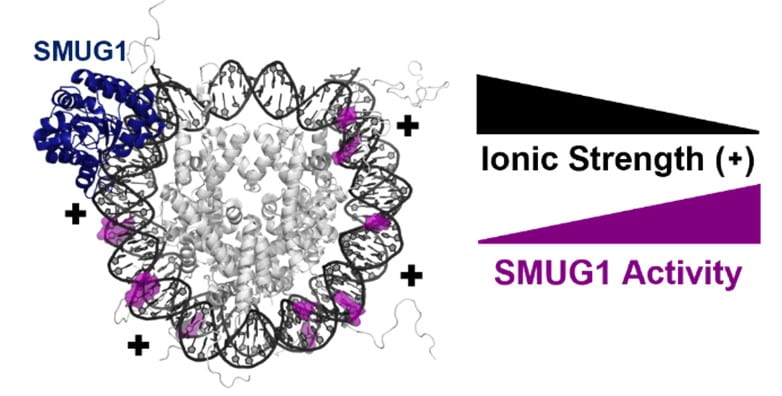
45. Cook, J.C. and Delaney, S. The domino effect: Nucleosome dynamics and the regulation of base excision repair enzymes. DNA. 2022 2, 248. [Article]
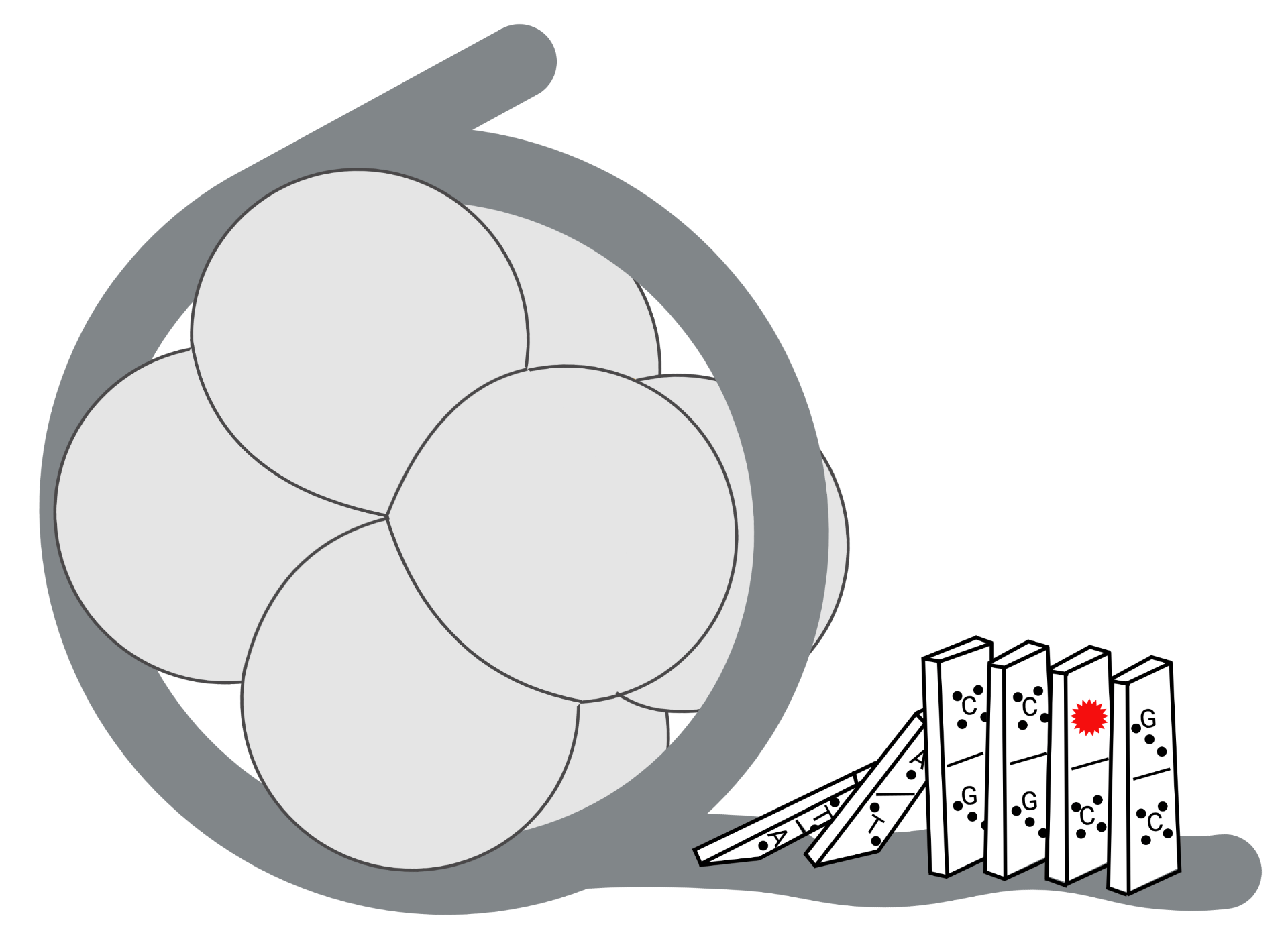
44. Li, C., Rioux, K.L., Delaney, S. Histone variants H3.3 and H2A.Z/H3.3 facilitate excision of uracil from nucleosome core particles. DNA Repair 2022 116, 103355. [Article]
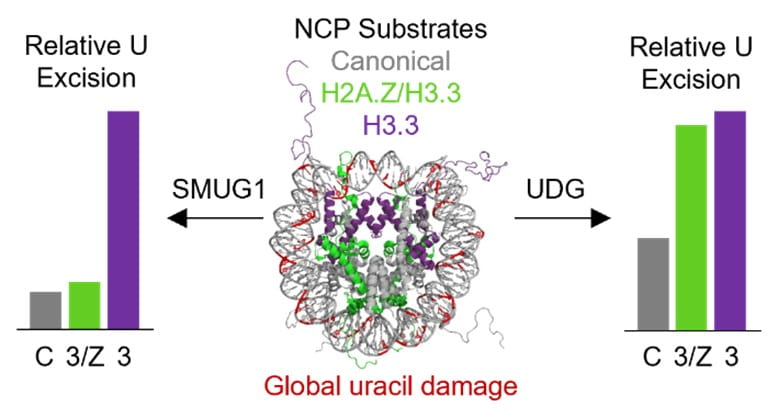
43. #Biechele-Speziale, D.J., #Sutton, T.B., Delaney, S. Obstacles and opportunities for base excision repair in chromatin. DNA Repair 2022 116, 103345. #Co-first authors (in alphabetical order). [Article]
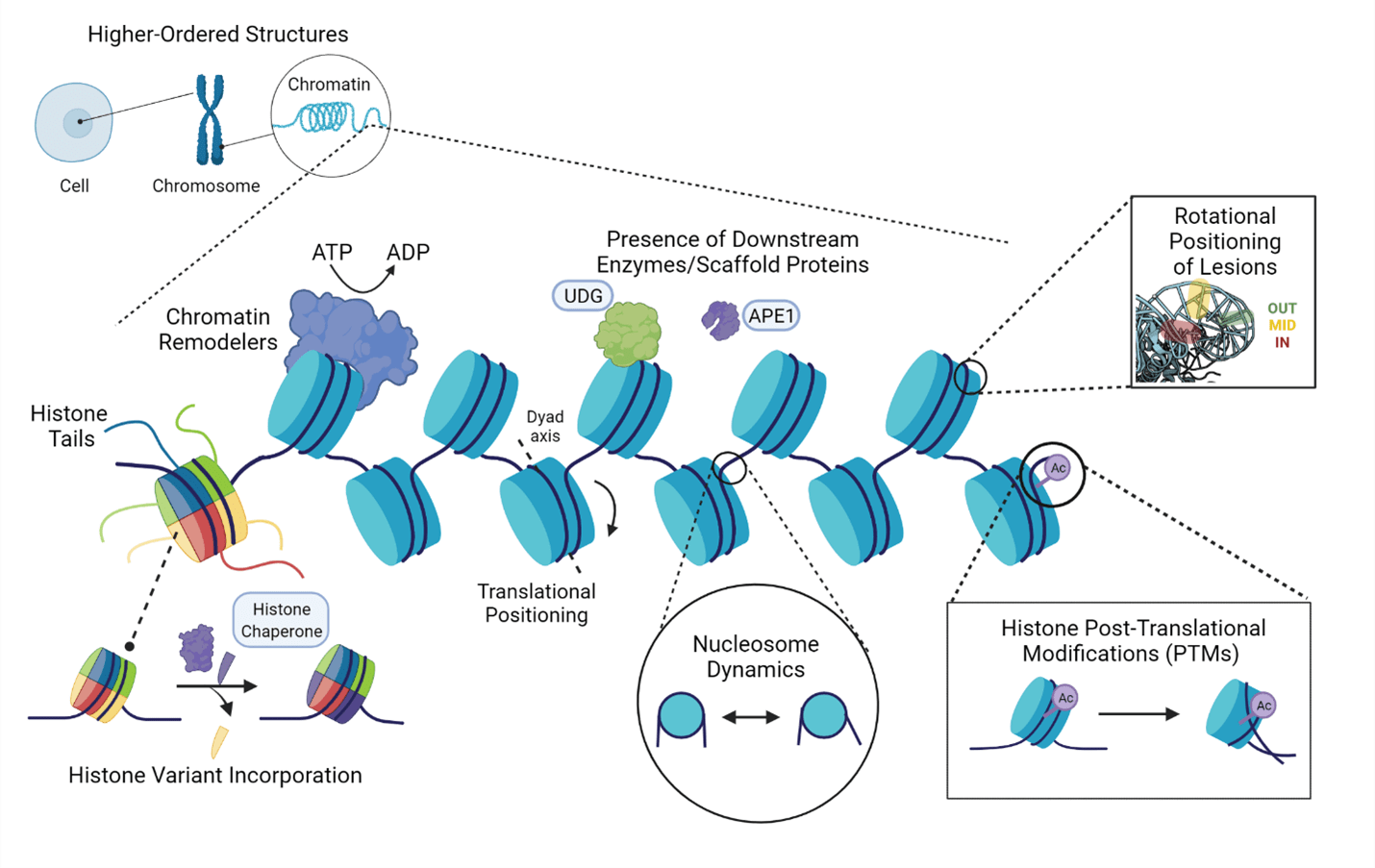
42. Tarantino, M.E. and Delaney, S. Kinetic analysis of the effect of N-terminal acetylation in thymine DNA glycosylase. Biochemistry 2022 61, 895-908. [Article]
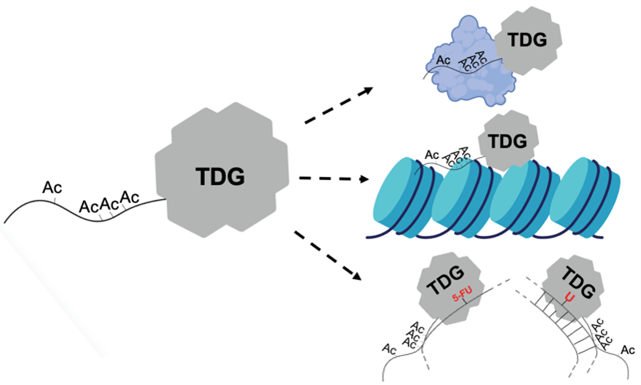
41. Caffrey, P.J. and Delaney, S. Nucleosome core particles lacking H2B or H3 tails are altered structurally and have differential base excision repair fingerprints. Biochemistry 2021 60, 210-218. [Article]

40. Rioux, K.L. and Delaney, S. 1,N6-ethenoadenine: From molecular to biological consequences. Chem. Res. Toxicol. 2020 33, 2688-2698. [Article]

39. Caffrey P.J., Kher R., Bian K., Li D., Delaney S. Comparison of the base excision and direct reversal repair pathways for correcting 1,N6-ethenoadenine in strongly positioned nucleosome core particles. Chem. Res. Toxicol. 2020 33, 1888-1896. [Article] **Honored as ACS Editors’ Choice Article for May 1, 2020 [ACS Editors’ Choice]**Featured on cover of July 2020 issue [Cover]

38. Caffrey, P.J. and Delaney, S. Chromatin and other obstacles to base excision repair: Potential roles in carcinogenesis. Mutagenesis 2020 35, 39-50. [Article]
37. Li, C. and Delaney, S. Challenges for base excision repair enzymes: Acquiring access to damaged DNA in chromatin. Book chapter in The Enzymes: DNA Repair 2019 45, 27-57. [Chapter]
36. Kennedy, E.E., Li, C., and Delaney, S. The global repair profile of human alkyladenine DNA glycosylase on nucleosomes reveals DNA packaging effects. ACS Chem. Biol. 2019 14, 1687-1692. [Article]
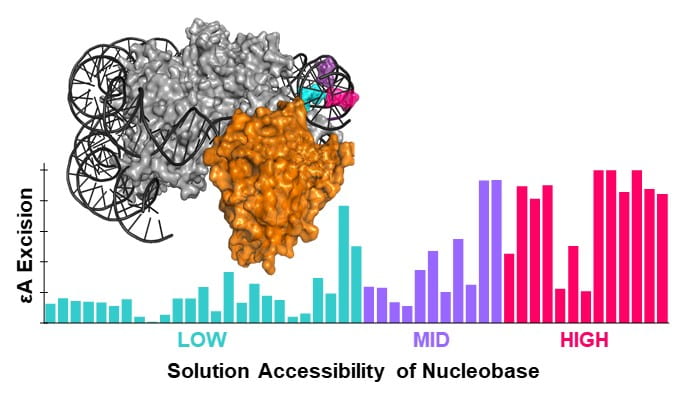
35. Li, C. and Delaney, S. Histone H2A variants enhance the initiation of base excision repair in nucleosomes. ACS Chem. Biol. 2019 14, 1041-1050. [Article] **Honored as ACS Editors’ Choice Article for May 7, 2019. [ACS Editors’ Choice]

34. Tarantino, M.E., Dow, B.J., Drohat, A.C., and Delaney, S. Nucleosomes and the three glycosylases: High, medium, and low levels of excision by the uracil DNA glycosylase superfamily. DNA Repair. 2018, 72, 56-63. [Article]
33. *Kennedy, E.E., *Caffrey, P.J. and Delaney, S. Initiating base excision repair in chromatin. DNA Repair 2018, 71, 87-92 . *Contributed equally. [Article]
32. *Bilotti, K., *Tarantino, M.E. and Delaney, S. Human oxoguanine glycosylase 1 removes solution accessible 8-oxo-7,8-dihydroguanine lesions from globally substituted nucleosomes except in the dyad region.
Biochemistry 2018, 57, 1436. [Article] *Contributed equally. Featured on Cover of March 2018 issue.
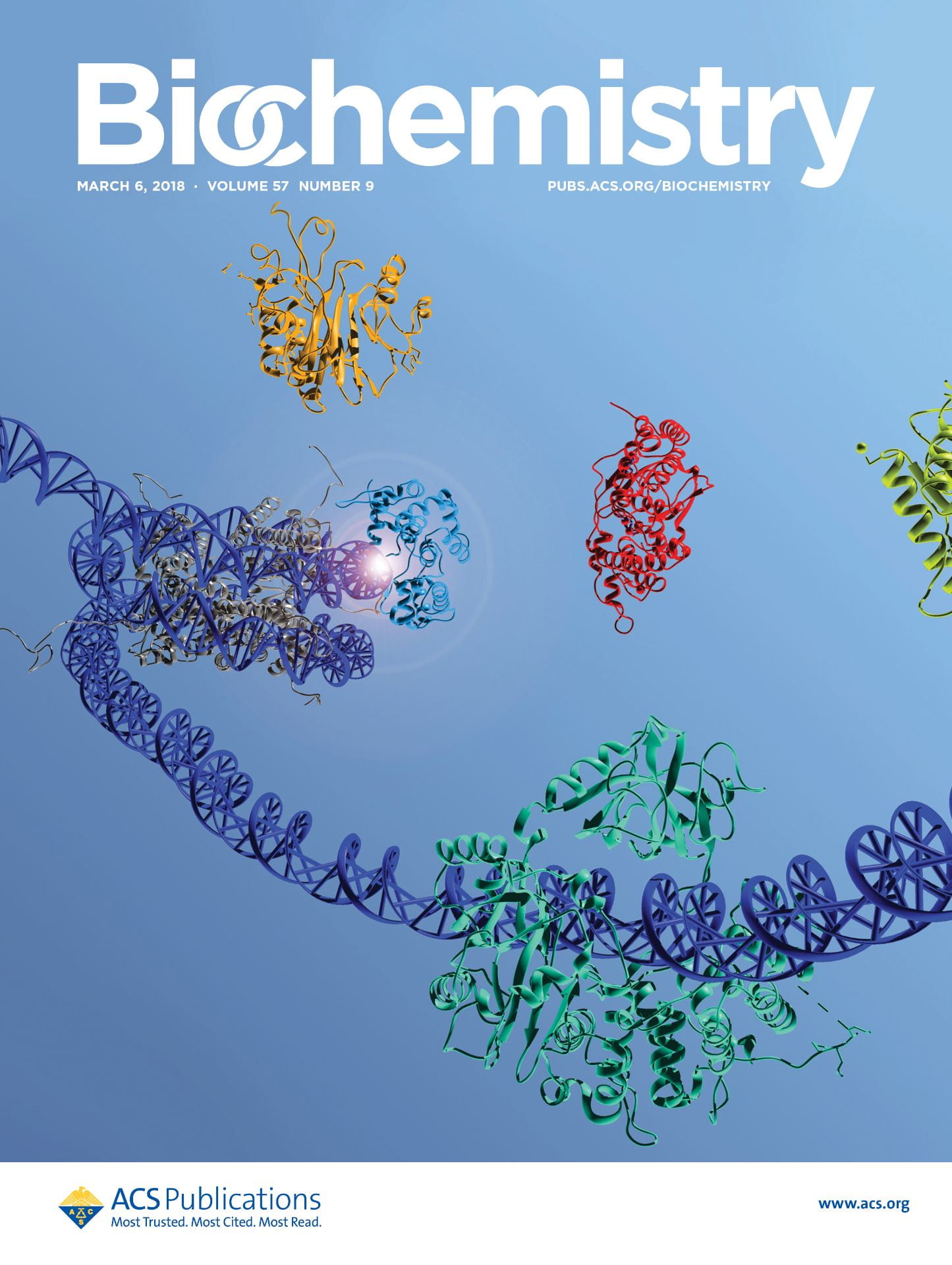
31. Bilotti, K., Kennedy, E.E., Li, C. and Delaney, S. Human OGG1 activity in nucleosomes is facilitated by transient unwrapping of DNA and is influenced by the local histone environment. DNA Repair. 2017, 59, 1. [Article]
30. Olmon, E.D. and Delaney, S. Differential ability of five DNA glycosylases to recognize and repair damage on nucleosomal DNA. ACS Chem. Biol. 2017, 12, 692. [Article] **Featured on Cover of March 17, 2017 issue. [Cover]
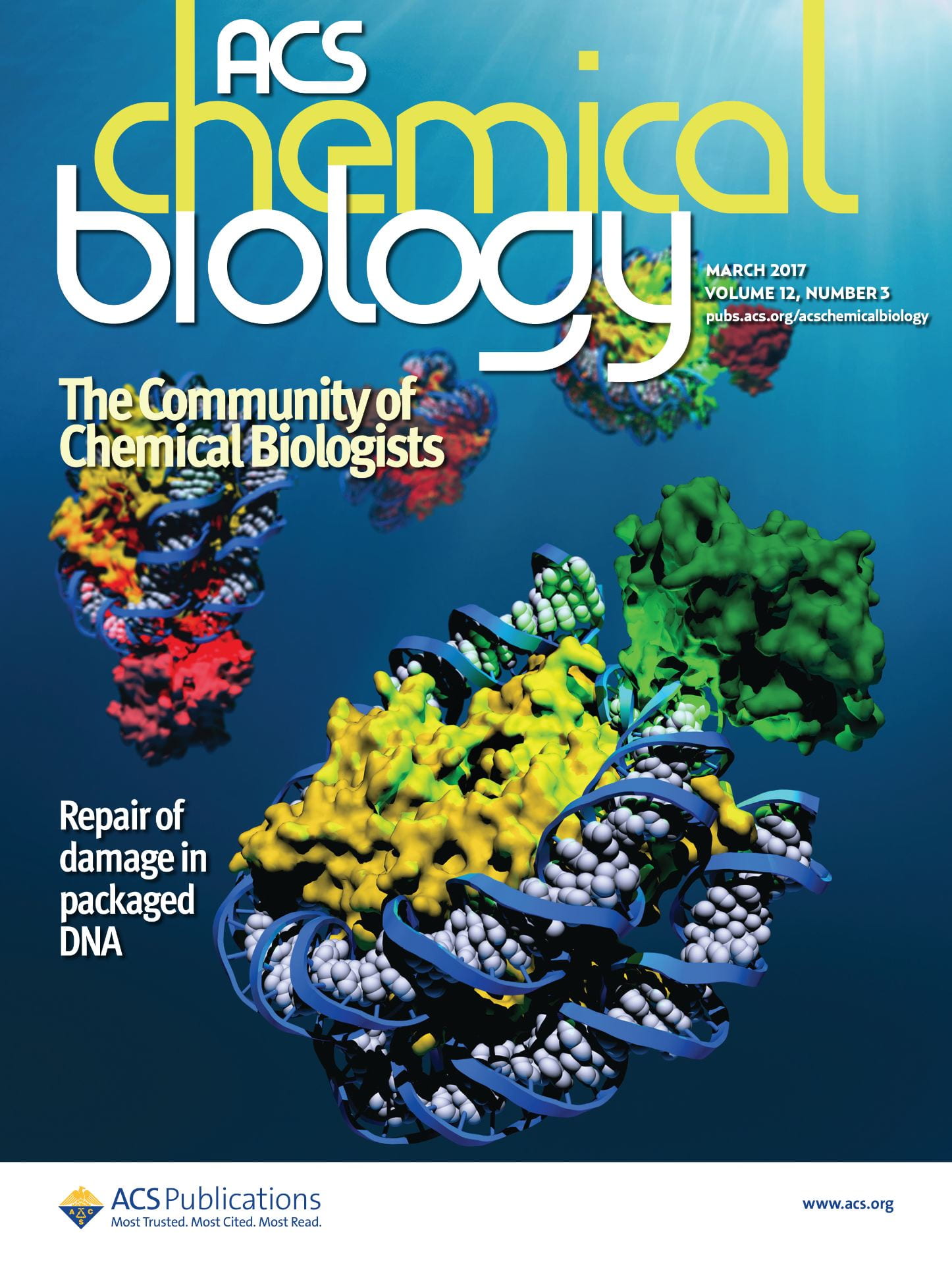
29. Huang, J. and Delaney, S. Unique length-dependent biophysical properties of repetitive DNA. J. Phys. Chem. B. 2016, 120, 4195. [Article]
28. Huang, J., Yennie, C. J., and Delaney, S. Klenow fragment discriminates against the incorporation of the hyperoxidized dGTP lesion spiroiminodihydantoin into DNA. Chem. Res. Toxicol. 2015, 28, 2325. [Article]
27. Tarantino, M.E., Bilotti, K., Huang, J., and Delaney, S. Rate-determining step of flap endonuclease 1 (FEN1) reflects a kinetic bias against long flaps and trinucleotide repeat sequences. J. Biol. Chem. 2015, 290, 21254. [Article]
26. Schermerhorn, K. M. and Delaney, S. A chemical and kinetic perspective on base excision repair of DNA. Acc. Chem. Res. 2014, 47, 1238-1246. [Article]
25. Volle C. B. and Delaney S. AGG/CCT interruptions affect nucleosome formation and positioning of healthy-length CGG/CCG triplet repeats. BMC Biochemistry. 2013, 14, 1-12. [Article]
24. Schermerhorn, K. M. and Delaney, S. Transient-state kinetics of apurinic/apyrimidinic (AP) endonuclease 1 acting on an authentic AP site and commonly-used substrate analogs: The effect of diverse metal ions and base
mismatches. Biochemistry. 2013, 52, 7669-7677. [Article]
23. Volle, C. B. and Delaney, S. CAG/CTG repeats alter affinity for the histone core and positioning of DNA in the nucleosome. Biochemistry. 2012, 51, 9814-9825. [Article]
22. Yennie, C. J. and Delaney, S. Thermodynamic consequences of the hyperoxidized guanine lesion guanidinohydantoin in duplex DNA. Chem. Res. Toxicol. 2012, 25, 1732-1739. [Article]
21. Delaney, S., Jarem, D. A., Volle, C. B., and Yennie, C. J. Chemical and biological consequences of oxidatively damaged guanine in DNA. Free Rad. Res. 2012, 46, 420-441. [Article]
20. Volle, C. B., Jarem, D. A., and Delaney, S.Trinucleotide repeat DNA alters structure to minimize the thermodynamic impact of 8-oxo-7,8-dihydroguanine. Biochemistry 2012, 51, 52-62. [Article]
19. Jarem, D. A. and Delaney, S. Premutation huntingtin allele adopts a non-B conformation and contains a hot spot for DNA damage. Biochem. Biophys. Res. Comm. 2011, 416, 146-152. [Article]
18. Avila Figueroa, A.; Cattie, D. J.; Delaney, S. A small unstructured nucleic acid disrupts a trinucleotide repeat hairpin. Biochem. Biophys. Res. Comm. 2011, 413, 532-536. [Article]
17. Jarem, D. A.; Wilson, N. R.; Schermerhorn, K. M.; Delaney, S. Incidence and persistence of 8-oxo-7,8-dihydroguanine within a hairpin intermediate exacerbates a toxic oxidation cycle associated with
trinucleotide repeat expansion. DNA Repair 2011, 10, 887-896. [Article]
16. Cooper, D. C., Yennie, C. J., Morin, J. B., Delaney, S. , and Suggs, J. W. Development of a DNA-damaging ferrocene amino acid. J. Organomet. Chem. 2011, 696, 3058-3061. [Article]
15. Avila Figueroa, A.; Cattie, D. J.; Delaney, S. Structure of even/odd trinucleotide repeat sequences modulates persistence of non-B conformations and conversion to duplex. Biochemistry 2011, 50, 4441-4450. [Article]
14. Jarem, D. A.; Huckaby, L. V.; Delaney, S. AGG interruptions in (CGG)n DNA repeat tracts modulate the structure and thermodynamics of non-B conformations in vitro. Biochemistry 2010, 49, 6826-6837. [Article]
13. Avila Figueroa, A.; Delaney, S. Mechanistic studies of hairpin to duplex conversion for trinucleotide repeat sequences. J. Biol. Chem. 2010, 285, 14648-14657. [Article]
12. Jarem, D. A.; Wilson, N. R.; Delaney, S. Structure-dependent DNA damage and repair in a trinucleotide repeat sequence. Biochemistry 2009, 48, 6655-6663. [Article]
________________________________________________________________________________
11. Delaney, S.; Delaney, J. C.; Essigmann, J. M. Chemical-Biological Fingerprinting: Probing the properties of DNA lesions formed by peroxynitrite. Chem. Res. Toxicol. 2007, 20, 1718-1729. [Article]
10. Neeley, W. L.; Delaney, S.; Alekseyev, Y. O.; Jarosz, D. F.; Delaney, J. C.; Walker, G. C.; Essigmann, J. M. DNA polymerase v allows bypass of toxic guanine oxidation products in vivo. J. Biol. Chem. 2007, 282,
12741-12748. [Article]
9. Delaney, S.; Neeley, W. L.; Delaney, J. C.; Essigmann, J. M. The substrate specificity of MutY for hyperoxidized guanine lesions in vivo. Biochemistry 2007, 46, 1448-1455. [Article]
8. Delaney, S.; Yoo, J.; Stemp, E. D.; Barton, J. K. Charge equilibration between two distinct sites in double helical DNA. Proc. Natl. Acad. Sci. U. S. A. 2004, 101, 10511-10516. [Article]
7. Yoo, J.; Delaney, S.; Stemp, E. D.; Barton, J. K. Rapid radical formation by DNA charge transport through sequences lacking intervening guanines. J. Am. Chem. Soc. 2003, 125, 6640-6641. [Article]
6. Delaney, S.; Barton, J. K. Long-range DNA charge transport. J. Org. Chem. 2003, 68, 6475-6483. [Article]
5. Delaney, S.; Barton, J. K. Charge transport in DNA duplex/quadruplex conjugates. Biochemistry 2003, 42, 14159-14165. [Article]
4. Delaney, S.; Pascaly, M.; Bhattacharya, P. K.; Han, K.; Barton, J. K. Oxidative damage by ruthenium complexes containing the dipyridophenazine ligand or its derivatives: A focus on intercalation. Inorg. Chem. 2002, 41,
1966-1974. [Article]
3. Choi, S.; Delaney, S.; Orbai, L.; Padgett, E. J.; Hakemian, A. S. A platinum(IV) complex oxidizes guanine to 8-oxo-guanine in DNA and RNA. Inorg. Chem. 2001, 40, 5481-5482. [Article]
2. Choi, S.; Mahalingaiah, S.; Delaney, S.; Neale, N. R.; Masood, S. Substitution and reduction of platinum(IV) complexes by a nucleotide, guanosine 5′-monophosphate. Inorg. Chem. 1999, 38, 1800-1805. [Article]
1. Choi, S.; Filotto, C.; Bisanzo, M.; Delaney, S.; Lagasee, D.; Whitworth, J. L.; Jusko, A.; Li, C. R.; Wood, N. A.; Willingham, J.; Schwenker, A.; Spaulding, K. Reduction and anticancer activity of platinum(IV) complexes. Inorg.
Chem. 1998, 37, 2500-2504. [Article]
